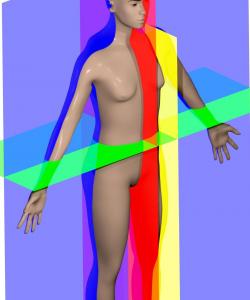
Planes of motion are foundational for any exercise science, physical rehabilitation, or sports medicine student. A better teaching approach is needed.
— Alan, Student DC
NEW YORK, NY, UNITED STATES, April 16, 2024 /EINPresswire.com/ — The Brookbush Institute leads the charge with the development of a student-centered course that is far more than memorization. The course includes a video lecture, activities, tons of examples, and a bit of humor to make learning, understanding, and applying the planes to exercise a fun and rewarding experience! (Note, this course is also approved for credits toward continuing education and certification)
INTRODUCTION from “Lesson 2: Planes of Motion”
(from “Introduction to Functional Anatomy Courses” at BrookbushInstitute.com)
This course explains the three planes of motion and how they apply to exercise analysis. A plane of motion is a two-dimensional surface with a defined direction. The three anatomical planes of motion are analogous to the cardinal planes and correspond to movement around the axes of the body. The three planes include the sagittal plane, frontal plane (coronal plane), and transverse plane (horizontal plane).
Exercise can be categorized by plane of motion by observing the joint action occurring during the exercise and the plane of motion that joint action occurs parallel to. Consideration of the planes of motion can aid in exercise programming by ensuring that exercises are selected that challenge the body to move and stabilize forces in all 3 planes. For example, most exercises are sagittal plane motions (like a squat), but an activity like getting out of a car requires multiplanar strength. This implies that a program that includes squats may also consider adding lateral movements like lateral lunges (frontal plane) and transverse plane movements like turning step-ups (transverse plane).
Sports medicine professionals (personal trainers, fitness instructors, physical therapists, athletic trainers, massage therapists, chiropractors, occupational therapists, etc.) will use the planes of motion to aid in the analysis of movement and the creation of sophisticated exercise programs and intervention plans. Further, the planes of motion are essential for future lessons on joint actions; for example, sagittal plane joint actions include flexion and extension, frontal plane joint actions include adduction
3 Planes of Motion
– Sagittal plane: Divides the body into right and left halves.
– Frontal plane (coronal plane): Divides the body into front and back halves.
– Transverse plane (horizontal plane): divides the body into top and bottom halves.
This Course Includes:
– Video Lecture
– Study Guide
– Text of Material
– Learning Activities
– Planes and Exercises Table
– Practice Exam
– Continuing Education and Certification Approved Final Exam
Brent D Brookbush
email us here
Brookbush Institute
Visit us on social media:
Facebook
Twitter
LinkedIn
Instagram
YouTube
TikTok
![]()



